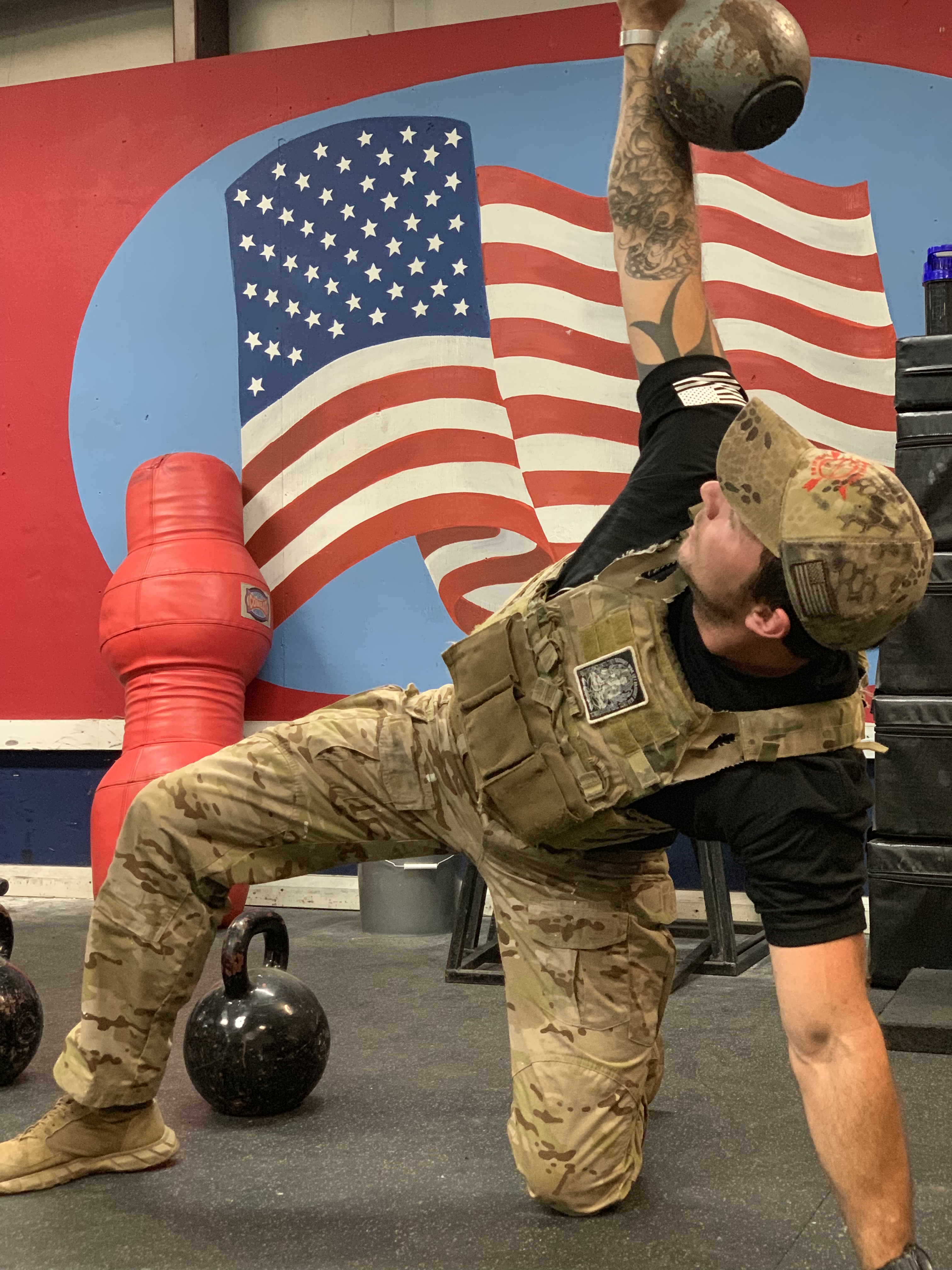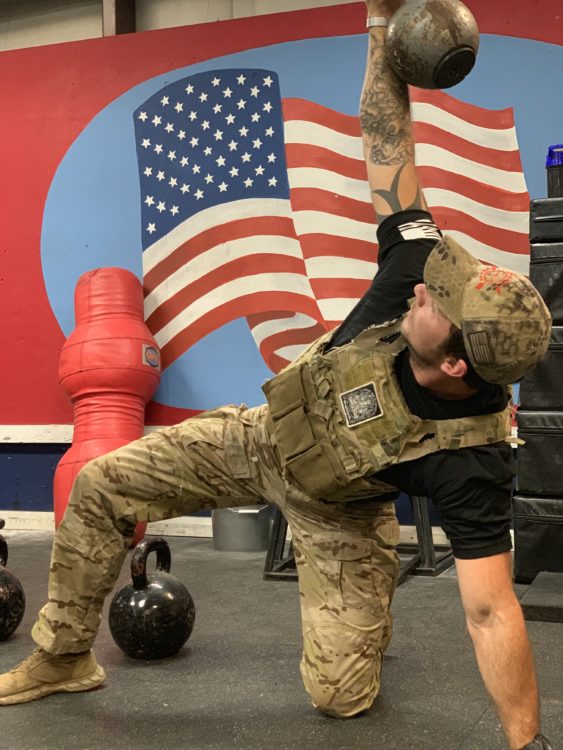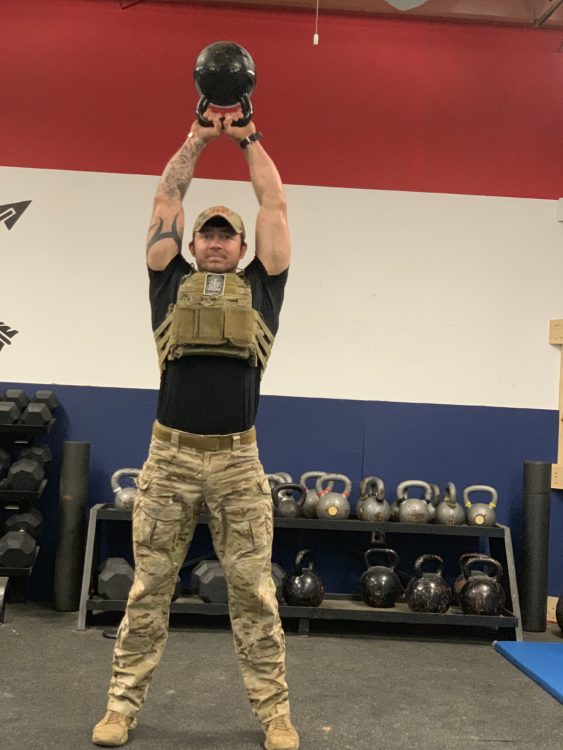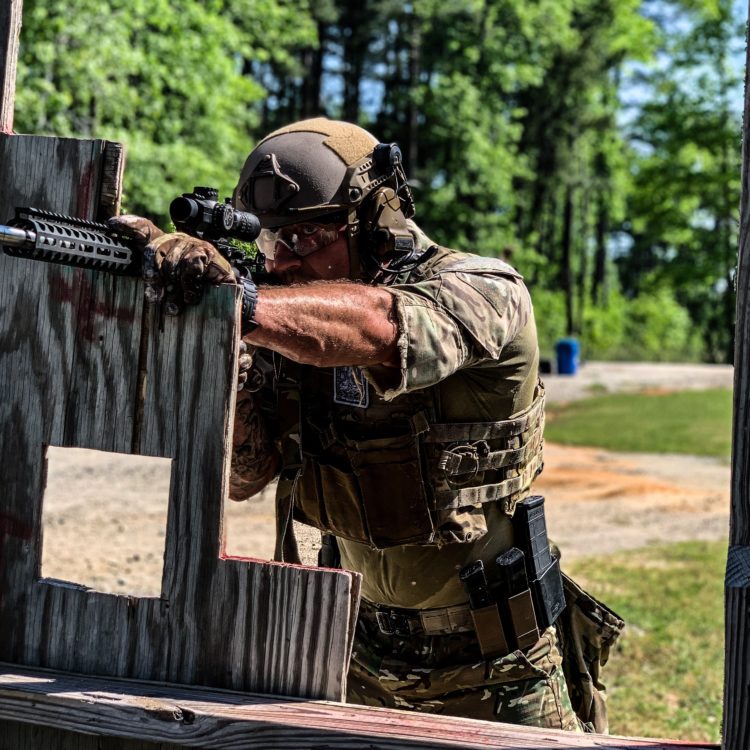The short answer? Boring but necessary work that isn’t as sexy as most people would like. The long answer? Well, we will get into that.
Before I can go into explaining what tactical athlete programming is, I should start with my qualifications so you can know where I am coming from.
On the professional side I spent over 10 years in the U.S. Army, the majority of which I spent in the U.S. Army Special Forces (the “Green Berets”). I have deployed to Afghanistan, Iraq, Kuwait, and a number of countries throughout Africa. I have walked on the loose shale in the mountains of Afghanistan, slipped and slid during the rainy season in Iraq, and cursed the loose sands in Kuwait. During all of those events I wore kit, a ruck, a helmet, and NVGs; all in all, when I was weighed for flight, I was over 300 lbs of man, equipment, and shit.
I also have experience working as a strength and conditioning programming coach for seven years, programming for U.S. Army Special Forces, Navy SEALs, Navy EOD, Air Force CCTs, and an Air Force PJ. I also worked with regular Army Infantry, Marine Corps Infantry, and a number of support personnel from every branch. Outside of the military I had the opportunity to work with fire fighters, police officers, and EMS personnel, but today we are just focusing on the military programming.
Educationally, I have a Master of Science in Sports and Health Sciences and a slew of certifications that have influenced my approach to programming for tactical athletes. It is my hope that with this article you can better assess programs to help you meet your goals and prepare you for the rigors of combat and increase the longevity of your body under the stress of being a tactical athlete.
While working with military professionals, damn near every single individual wanted to “get bigger, get stronger, and get jacked.” If that is what you hope this article will support, well sadly, you will be let down. This is the truth about what you will need to be successful as a professional tactical athlete and most of the time it isn’t sexy.
When I assess a program for any athlete I look at three things: GPP, SSP, and Periodization.
- General Physical Preparedness (GPP)
The first phase of any program should be working on general fitness (aerobic and anaerobic) which might look similar to a 5-3-1, 5×5, strength focused CrossFit, or the usual knuckle dragging, chest banging, gallon water jug carrying, meat head workouts, with one MAJOR difference. The accessory work must be present from the very beginning and it must be EFFECTIVE.
Accessory work is additional movements which help to benefit your main lifts, many of these are unilateral (one side at a time), isolated (one specific muscle), or isometric (static holds) in nature. I specifically look for accessory work in programs as tactical athletes need to have STRONG and STABLE joints and cores if they want to remain in the game free from injuries for as long as possible.
A huge part of the tactical athlete’s job is lifting, moving, twisting, and strength related. If you don’t have a baseline of strength then putting 40mm cans over your head to help load up an RG or MATB is going to be a painful day for you. Speaking of moving things over your head, how is your shoulder mobility?
That is right, mobility should be included from the very beginning and should NOT be skipped. Five minutes foam rolling your quad doesn’t count. Having a quality warm-up which includes dynamic stretching, lift specific movement prep, and active movements to get your body temperature up are all important. The cool-down should also have a huge investment and should not just be you grabbing your empty pre-workout shaker and walking to the locker room to start changing, only to stop and flex in the mirror. The cool down should involve a movement base which allows your heart rate to come back down in a controlled manner, static stretching, foam rolling, band assisted or PNF stretching, and breath control exercises. I usually recommended that my athletes spent 1-2 days doing a 30-45 minute yoga session that involved a passive yoga (Yin or Flow usually).
Strength and mobility aren’t alone during the GPP phase, you also need to build a foundation of aerobic ability, yeah… endurance training. This isn’t just going for long runs, you need to also include specific drills to help you move efficiently and effectively. A lot of times I included these movement specific drills into the warm-up, but regardless of where they are you need to make sure your body moves properly and as efficiently as possible.
I know that seems like a lot, and that is just the first phase, the length of which should be dependent on your abilities when you begin.
- Sport Specific Programming (SPP)
I spent an absurd amount of time thinking over this topic while working on my masters. I was lucky enough that I could be coaching, serving, and studying while tying them all together in research projects. What makes being a tactical athlete different than other athletes? Let’s see, we need to be aerobically capable and able to move with efficiency, we need to be strong with the appropriate amount of mobility to apply our strength through a wide range of movements, and we need to be able to control our arousal levels during periods of high and low external activation. Ah yes, and there is one more thing, we need to be able to do all things with a variable external load. *DING DING DING*
A variable external load is the ability to load our body externally with different weights and load points, all while still being able to move, lift, and endure. The stress a ruck puts on your body is different than just body armor, body armor AND a ruck is another variable as well. Add in there the variables in biomechanics with the different loads and the general physiology of taking a deep breath while under load (breathing with kit on VS load bearing equipment (LBE) VS slick).
Once you have a solid foundation of strength, endurance, and mobility you should be working in these additional variables. If you are only rucking with a ruck then when you throw your kit on under your ruck, you won’t have the neurological and psychological developments to be as efficient as you could be. As a tactical athlete you need to make sure that you train through all of these variables in order to make sure you know what variables will come into play.
Examples:
- How does your plate carrier change your breathing pattern?
- How does adding a ruck change your center of gravity?
- How does wearing body army change how your body cools down?
- How does wearing an LBE change how you breathe?
- How does your range of motion change in your hips and how does that impact walking up a mountain?
- Does your kit allow you to maneuver effectively over, under, or through obstacles?
The best way to answer these questions is by including the different variables into training. Rucks are great but throw your LBE on one week, your plate carrier the next, and then go slick the following. I like to finish each workout with 100 step-ups per leg on a 20” box and change which external load I include. I also include my rifle some days to make sure my body knows the effect it will have when added to the equation.
What is the take away from this section? Sport Specific Programming MUST include external loads. A lot of “tactical athlete” programs are merely GPP+ programs that lack external loads. Sure you have an increased aerobic focus, but many of them lack rucks, kit workouts, or any type of training that challenges the way your body moves, reacts, or functions under external load.
Beyond the external load, being a tactical athlete means A LOT of unilateral stress and odd object strength. Walking under extreme loads on un-even terrain puts a lot of stress on your joints. The accessory work started during the GPP phase should continue and each day should include some sort of unilateral work to help strengthen stabilizers around your joints and building a rock solid core.
Odd object strength was summed up best by an old 1SG of mine, “I’ve never breached a door and saw a bench press competition going on.” Tactical athletes need to have the ability to apply their strength to odd objects with odd grips. I recommend incorporating sandbags, ropes, and stone training. It is damn near impossible to train all the different applications of strength you will need in combat but you can at least build the neural connections of applying your strength to an assortment of odd objects.
- Periodization
Mobility à Endurance à Strength à Max Strength à Power à Explosive Power à De-load à Repeat
This is a difficult section to explain with regards to the tactical athlete. There really is no season. We can argue that deployments are the season and then the off season is after returning stateside and the pre-season is the train-up, HOWEVER, that is not truly accurate. Depending on if you are attending schools, doing some sort of mission training, or going to the field for extended periods of time, your training periodization might be erratic where you are able to train regularly for 3 weeks and then here and there for two weeks and back on again, etc. etc. etc. Your transition through the periodization won’t be as smooth as someone focusing on a regular sport such as football, ice hockey, or crochet.
Though you have an erratic schedule you still need to make sure you working through the phases in such a manner as to not cause injuries, this means making sure you take de-load weeks or even a total rest week if your body is destroyed from training or a school. The biggest part of periodization for the tactical athlete is being able to listen to their body. I had my athletes keep a training log/journal which had a section for each day that listed: (1) Sleep: (amount and quality); (2) My body feels: (On a scale of 1-10); (3) Motivation: (On a scale of 1-10); (4) Body weight.
Most service members I have worked with, myself included, are EXTREMELY type-A and would rather give up sleep than give up a workout. We are willing to push to the breaking point because working out is part of our culture, our life, and our livelihood. Either that or we have a fear of getting weaker and letting our team/buddies down. If that is you then listen to this profound wisdom given to me by a mentor of mine,
“MORE IS NOT MORE, if you are injured from stupidity you will be letting your team down a lot more than if you take a few days off to make sure your body is rested and recovered from training.”
Final Thoughts
There are no magic programs, miracle pills, or black magic secrets that will effectively prepare you for combat because nothing can mimic the absolute chaos and infinite number of variables that can influence the situations. However, you can prepare yourself by being as physically ready as possible by following a quality program and listening to your body.
This is a huge topic and we are merely scratching the surface, my hope is that after reading this article you can take an objective look at your program, or ones you are thinking about following, and see if it meets the needs of your profession.
A tactical program isn’t a sexy program. Hypertrophy makes you heavier and means you are carrying additional weight on long movements, not only that but you have to feed that additional size if you want it to remain after long missions which means carrying more food (i.e. more weight). You can throw in fat arm Fridays to keep those sleeves tight for your favorite polo shirt but focus on what is needed to accomplish your missions.
Stay focused, put in the work, and recover right.
To summarize:
- Assess programs by looking to make sure they include GPP, SSP, and Periodization.
- GPP builds the foundation of strength, endurance, and mobility but make sure it includes accessory work and not just the major lifts.
- Strong is great but quality of movement is better.
- SPP for tactical athletes is variable external loads, unilateral movements, and odd object strength. If all of these are not included in your program then you are selling yourself short.
- Periodization sucks when you’re a tactical athlete. Listen to your body but still follow a progression as well as you can.
- Rest when your body needs to rest.
- LISTEN TO YOUR BODY!
- Mobility is important, start early.
- Strong, stable joints are happy joints.
- Strong cores save lives.
*The views and opinions expressed on this website are solely those of the original authors and contributors. These views and opinions do not necessarily represent those of Spotter Up Magazine, the administrative staff, and/or any/all contributors to this site.



